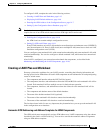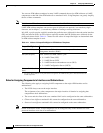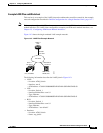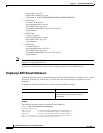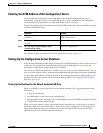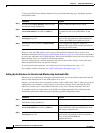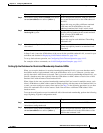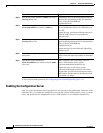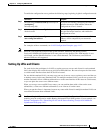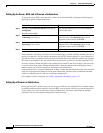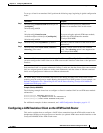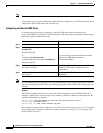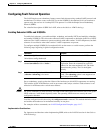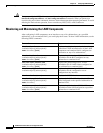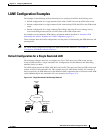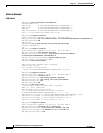
14-11
ATM Switch Router Software Configuration Guide
OL-7396-01
Chapter 14 Configuring LAN Emulation
LANE Configuration Tasks
To enable the configuration server, perform the following steps, beginning in global configuration mode:
For examples of these commands, see LANE Configuration Examples, page 14-17.
Note Since the 12.0(1a)W5(5b) release of the system software, addressing the interface on the
Catalyst 8510 MSR and LightStream 1010 route processor has changed. The ATM interface is now
called atm0, and the Ethernet interface is now called ethernet0. The old formats (atm 2/0/0 and
ethernet 2/0/0) are still supported.
Setting Up LESs and Clients
For each device that participates in LANE, set up the necessary servers and clients for each emulated
LAN; then display and record the server and client ATM addresses. Be sure to keep track of the router
or switch router interface where the LECS will be located.
For one default emulated LAN, you must set up one set of servers: one as a primary server and the rest
as backup servers for the same emulated LAN. For multiple emulated LANs, you can set up servers for
another emulated LAN on a different subinterface or on the same interface of this router or switch router,
or you can place the servers on a different router.
When you set up a server and BUS on a router, you can combine them with a client on the same
subinterface, a client on a different subinterface, or no client at all on the router.
Where you put the clients is important, because any router with clients for multiple emulated LANs can
route frames between those emulated LANs.
Note For Token Ring LANE environments that source-route bridge IP traffic to the ATM switch routers,
multiring must be configured to enable Routing Information Field (RIF) packets. For an example, see
Default Configuration for a Token Ring ELAN with IP Source Routing (Catalyst 8510 MSR and
LightStream 1010), page 14-31.
Command Purpose
Step 1
Switch(config)# interface atm 0[.subinterface#
[multipoint]]
Switch(config-if)#
If you are not currently configuring the interface,
specifies the major ATM interface where the
configuration server is located.
Step 2
Switch(config-if)# lane config database
database-name
Links the configuration server’s database name to
the specified major interface, and enables the
configuration server.
Step 3
Switch(config-if)# lane config
auto-config-atm-address
Specifies that the configuration server’s ATM
address will be computed by our automatic
method.



